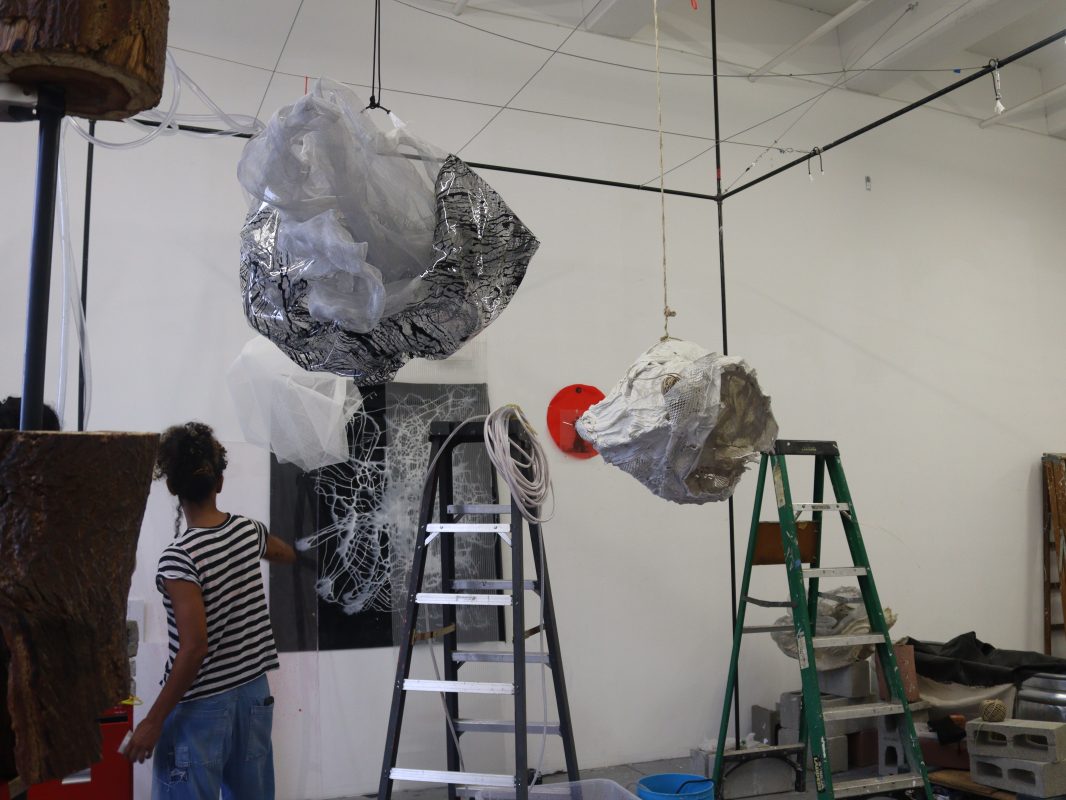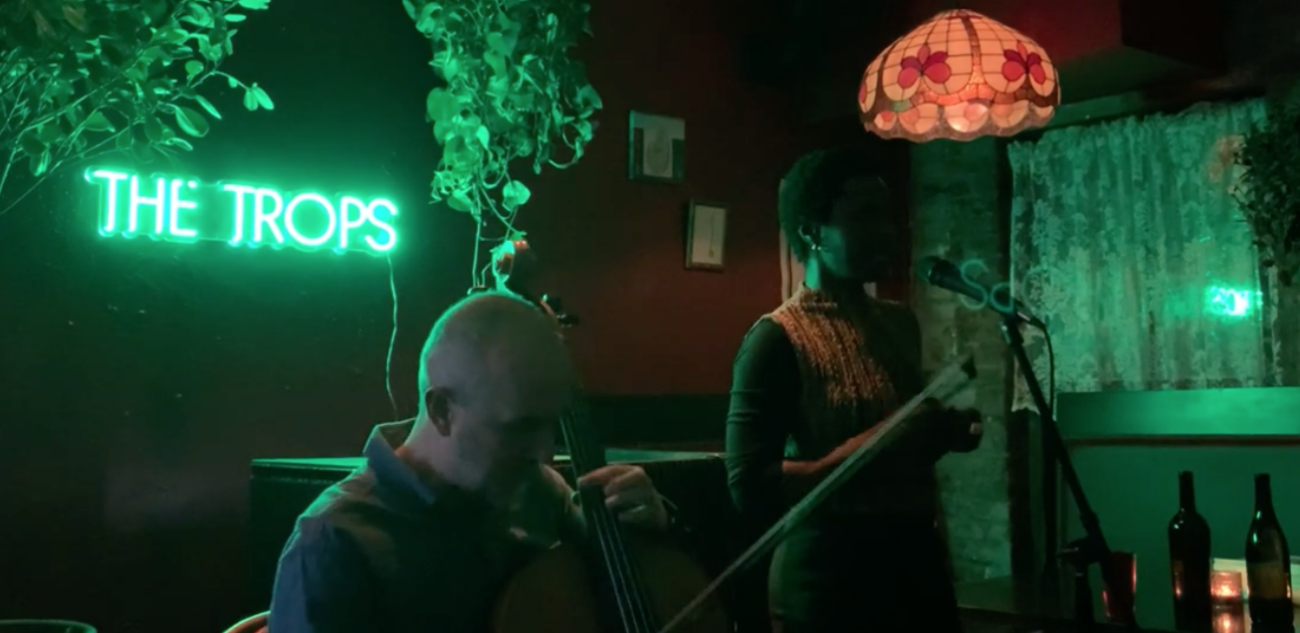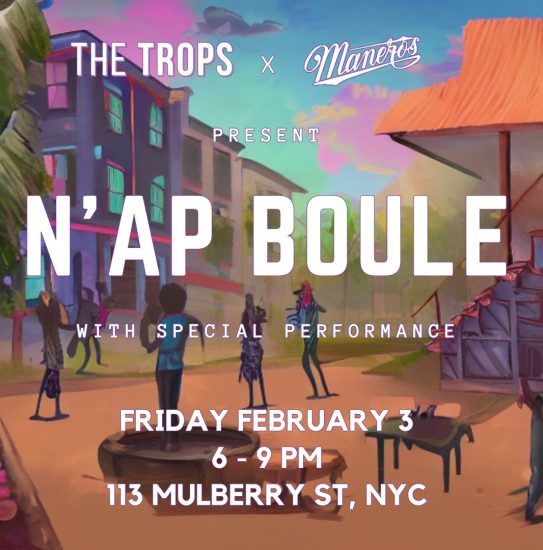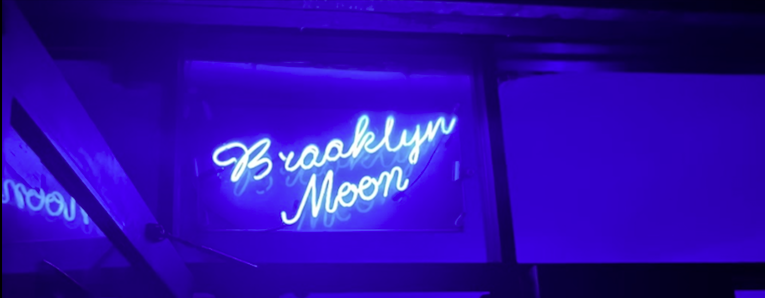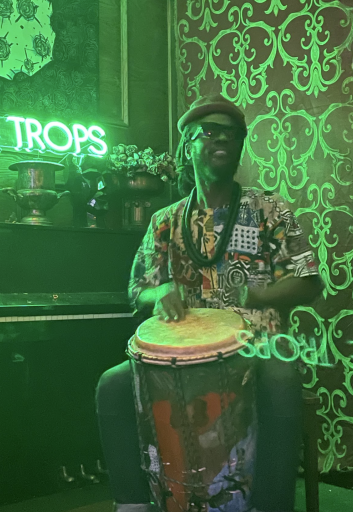An Interview with Miriam Parker
Miriam Parker in her studio. Photo by Avery Walker
Miriam Parker is an interdisciplinary artist who uses movement, paint, video art and sculpture/installation. She has been influenced by her experience as a dancer, her study of Buddhism phenomenology, and her connection to the free jazz tradition. Through re-organizational practices, Parker refines her understanding of individuality, outside of traditions built from oppressive ethics. Parker is a Monira Foundation artist-in-residence at Mana Contemporary.
In their interview, Alexandra Kosloski and Miriam Parker discuss the artist’s philosophy and the way it manifests in her art.
AK: What is your studio practice like?
Miriam Parker: Well, there are two aspects. One is working on installation, which is this practice of translating my process from being a dancer into being someone who is making something outside of her body, not just using the body itself. In this installation practice, I’ve been really steady with this idea of creating a space that itself becomes generative. I first use my body to create something, but then, the aim is for this thing to be the matrix for its own development. For instance, if I draw a line, it’s not just about creating a line that stays there, but the line itself has to be growing. How do I create an installation- in space- that is alive, the same way a dancer is alive, or music? How do I create an installation that animates the space?
For the past year, one of my research areas has been about the frame; what does this frame- that is going to allow for the space to be animated- look like?
I have also replaced the body with paint, still with the same question at the back of my mind– what makes something alive? How can you create life, especially where you make do with the human body? Paint is interesting because it is viscous and it can be a vehicle for energies and flows; and right now I am learning about viscosity and paint and pumps and how much energy it takes to bring the water/paint up to a certain height. I am trying many different things and learning from the numerous mistakes I make in the process. But what is interesting is that while I was working with the paint, I also realized that it was not just about using the paint as a proxy for the body– I slowly realized it was also about how the paint was released– that’s where the magic lies.
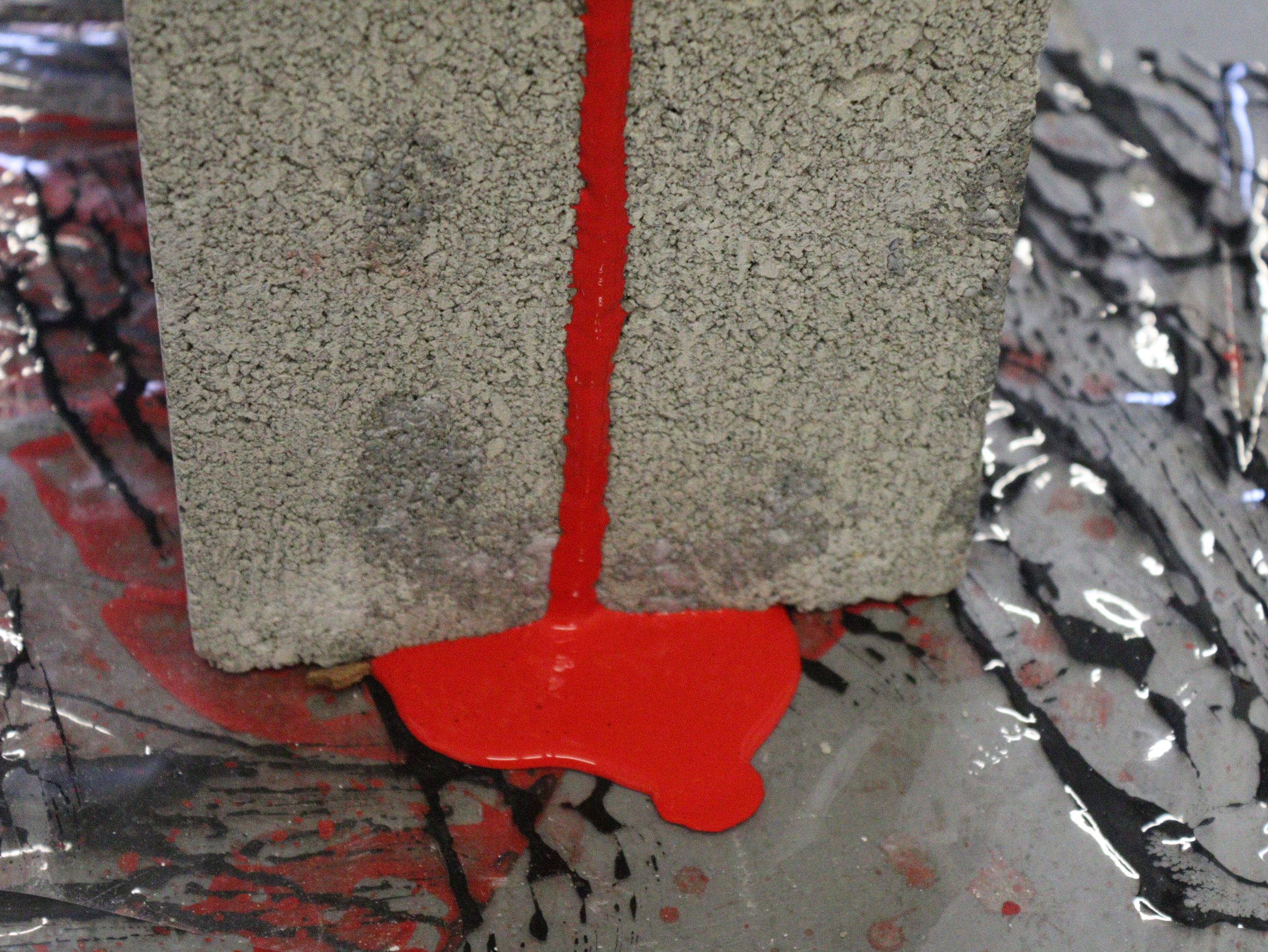
In the artist’s studio. Photo by Avery Walker
For instance, as I am speaking right now, the impression you have of me is not just the result of what I am saying, but also of how the words are released from my mouth. When someone is dancing, it’s not just about their movements, but it’s about how they move out of their bodies and towards the onlookers. Well, it’s the same thing with the paint. So now the challenge is understanding how to have each of my sculptures– which is dispensing paint– have its own rhythm and language.
AK: So there’s that translation between inside and outside of the body, do you define any boundaries between performance and visual art? How?
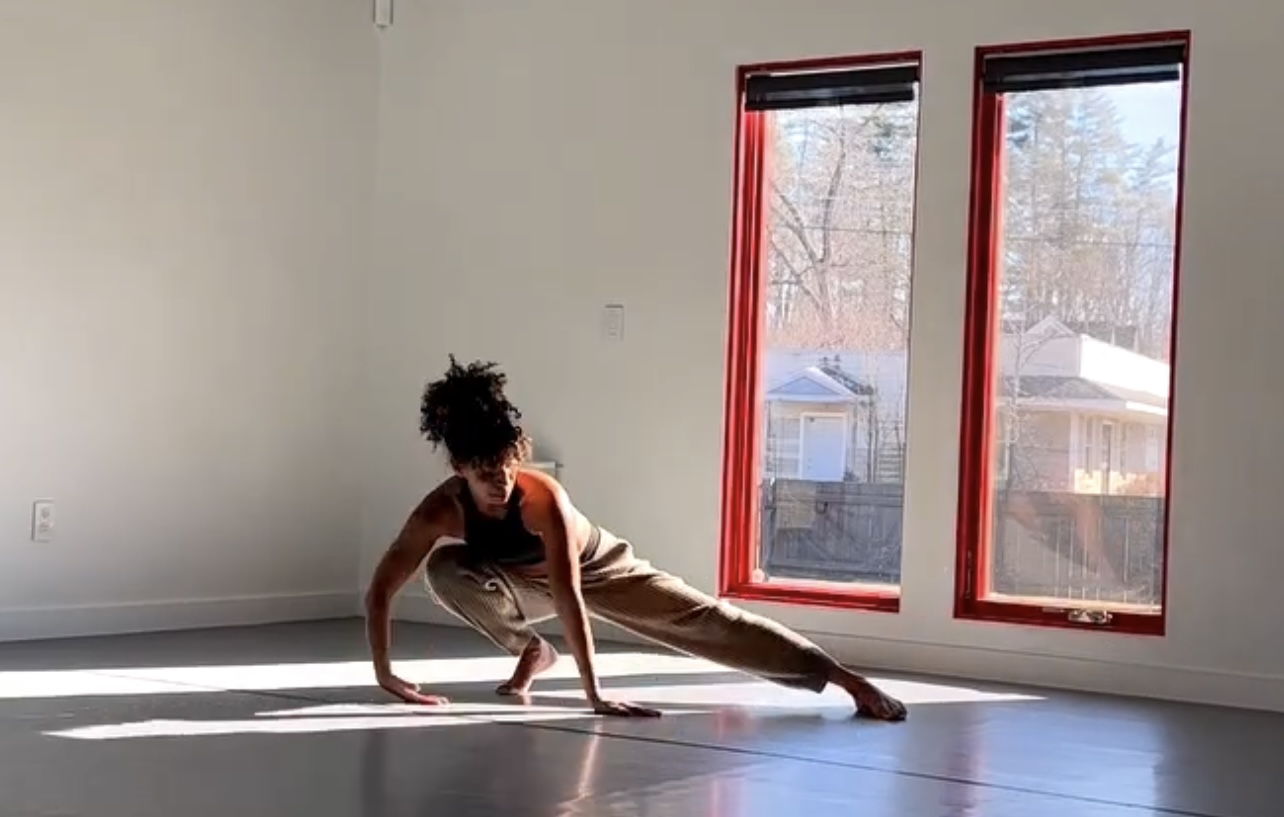
Miriam Parker, in residency, via @miriamparts on Instagram
Miriam Parker: Technique. You know, the technique of creating a painting is a choreography that’s very different from the technique of creating movement with your body. The choreography of painting, or of architecture, is a different technique. I would say an artist has a vision that usually has a primary actor and then secondary actors, just like in a movie or a play. For me, my primary actor or main character is dance. I’m a dancer, I’ve spent my whole life dancing. The essence of dance is no different than painting or music making, the essence itself is always art. What is different lies in the technique, the craftsmanship, and now that I am working with different mediums, I have to learn about their own idiosyncratic techniques.
AK: Performance art often physically inserts the artists into the work. Could you tell me a little bit about how you navigate the connection between art and your body when you’re physically in the work? How does that feel?
Miriam Parker: Like coming home. I have this unsurmountable wish to birth something beautiful into the world. I don’t have children, and creating something that is separate from my body, but that still comes from my body, is really important. When I, as much as I can, physicalize everything I’m doing, I’m in a very, very happy place. Then, when I perform inside the spaces I have created and I activate these spaces with my body, the gestures I improvise are of deepest reverence for the space and for the architecture of that space. Once I understand the space I am in, I then can use my body to rearrange this space– even if it’s not visually rearranged for the audience, in my body I’m placing myself in different positions that help me to view the architecture of the space differently. So, what starts off as finite- an installation- then becomes infinite. It’s like a jungle gym of lines and curves and I get to just play.
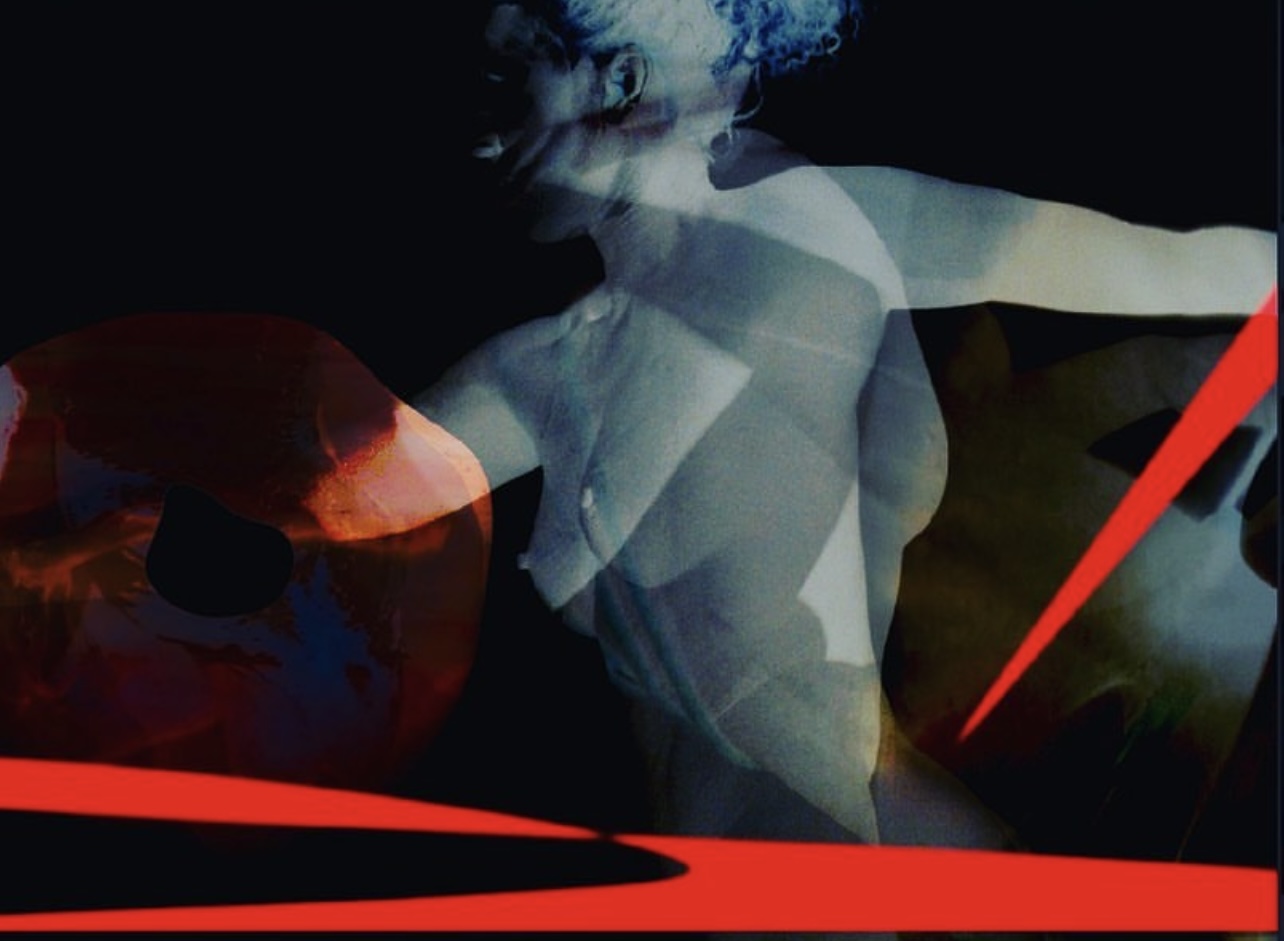
Miriam Parker, Digital Prints, via @miriamparts on Instagram
AK: I’ve noticed that your art is so tactile. You seem so invested physically, and there’s a lot about process and creation. Also, your art often involves collaboration with other artists, including many different kinds of media. What have these experiences with other characters brought to your practice?
Miriam Parker: The reason why I started fabricating physical spaces and going into what they call “the digital art realm” is because I wanted to play with the power dynamics between performers and creators (of sculptures, installations, etc.). In a solo performance, you usually have a single body, and then you have the space, and if I am the performer I am the number one actor in that space, I am the number one focus. But soon, I felt like I also wanted to honor all the other contributing factors that allow for your eye to see. What if, instead of just applauding the performer, we honored everything- human and non-human- that enable us to see the object? And that, to me, is very much about the social and political aspects of power living. To me, stepping into the visual art world is very much about– let me honor the ground, the importance of how ground plays on the physical body as the performer moves, how ground, in the end, allows the onlookers to see this physical body in its different aspects. And that’s the type of questions an architect would ask. How does the space design the movements? And I say that because I didn’t want to be a master or a conductor. I didn’t want to come and say “This is what we’re doing, this is the object I want to create, and this is how you put it into motion.” I want it to move all together, as a generative, co-operative ecosystem. To me, this is very close to the definition of love.
Working with others is having the joy of bringing in other artists who have a mastery over their own technique, and who have their own vision. People who have spent a lot of time understanding their vocabulary and whatever medium it is. Bringing those together is part of my craft, actually, their masterfulness, their individual creative ways. How do you create space that allows each of these artists to be there in an equal way, without one being more important than the other? That’s my interest in collaboration, which is honoring others without taking away from their voice, which is very challenging.
AK: How has your study of Buddhism phenomenology influenced you?
Miriam Parker: Well, everything I’m saying is birthed from that philosophy. One of the core ideas and concepts that is brought up through Buddhism is the idea of interdependence. The idea is that nothing arises independently, there is always something that is lending itself for something to happen. The question is then– how can I be a part of this collaborative process? How do I honor this creative nature that we are all a part of ? The cooperative, interdependent nature of the life we are living is a key element of Buddhism thought that I am trying to bring into my artistic practice. The goal, in other words, is to break down the misconceptions of how we assume things work (in this case, that things can work independently from each other). So my whole practice comes from my Buddhist philosophy studies, it’s the basis of everything.
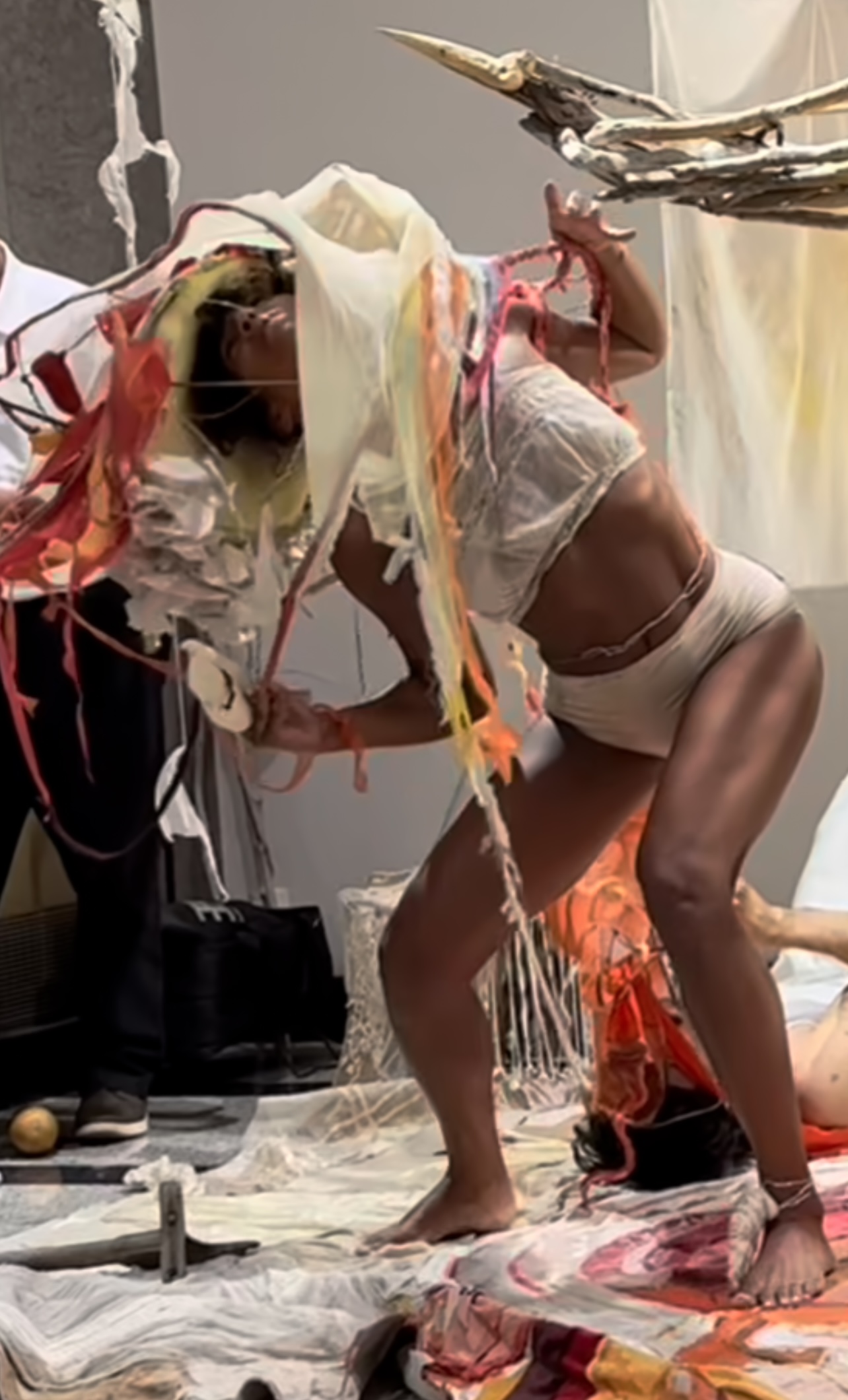
Miriam Parker, MAYPOLE to the sun & The Minotaur’s daughter by Eleni Giannopoulou & Benjamin Craig, via @miriamparts on Instagram
AK: What current projects are you working on?
Miriam Parker: Great question. I’ve been working on something called “Heart Patterns” for two years. “Heart Patterns” is based on the idea I was developing earlier of creating an installation that is endowed with a sense of life. In the past, I have created installations in which life was there because my body was there. And I really had this urge to do that without my body. So I’m experimenting with two main elements. One is paint flow, the other is sound. In the end, the whole flow of paint and the receiving of the paint on different canvases and wells will be made sonic. And then this other project, which is so dear to my heart, is a film that revolves around a specific image– the one that stands in the middle of the fire. There is a Buddhist concept called “Bodhisattva”. And a Bodhisattva is somebody who, when they see/encounter suffering, do not run away. A Bodhisattva is one who trains to stand in the center of the fire. And it’s through standing in that center that they transcend by not being afraid of pain. There was an image that I found from the Brooklyn Museum, that is the image that I’m trying to embody and use as the center of this film, a real tribute to wisdom. It is about the fire and the Phoenix and ash and all of these iconic symbols of empowerment.
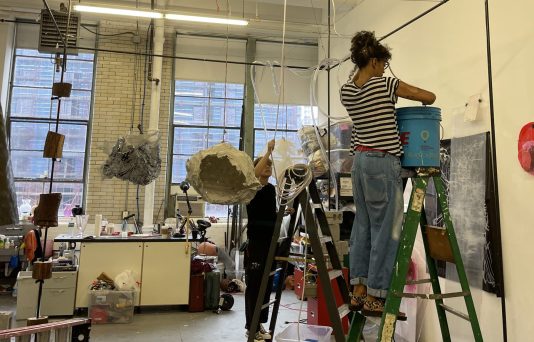
In the artist’s studio. Photo by Avery Walker
As a side comment– we go to museums and look at these relics and most of them are actually meant for really high spiritual practice. Relics are meant to help us evolve. And looking at them in the context of the way we usually see them shown, does not do that. So I really would like this film to be shown in a museum setting as a challenge. Imagine a show about wisdom. How would you curate that so that people actually learn about transcendence? And not just history.
An Interview with Miriam Parker Read More »
Interview